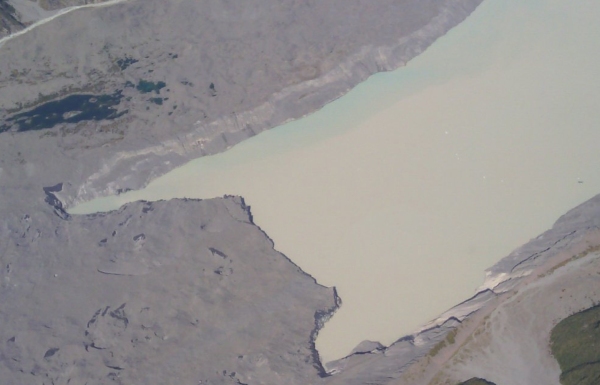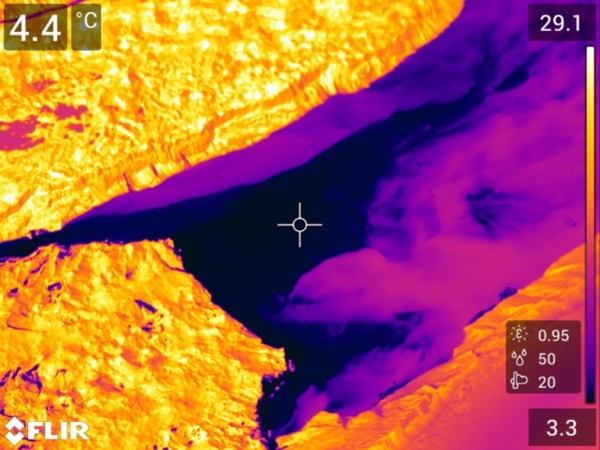Thermal images taken by a NIWA scientist during this year’s aerial survey of South Island glaciers have revealed in extraordinary detail how heat in the surrounding landscape is affecting the ice.
Every year at the end of summer, NIWA scientists and Victoria University glaciologists undertake the annual snowline survey, taking thousands of aerial photographs documenting the summer melt and how South Island glaciers have changed in the previous 12 months.
Unique 41 year old continuous story
The survey of more than 50 glaciers, reveals how much of the previous winter’s snow remains to contribute to long-term glacial ice accumulation. The glacier photograph collection is used to build 3D models of the glaciers to accurately measure the gain or loss from year to year.
This unique record now spans 41 years and the results this year—after two record-breaking summers in a row—show more glaciers have completely disappeared and others have retreated further.
NIWA climate scientist Dr Andrew Lorrey says the information gained over the past four decades has produced an incredibly valuable dataset that provides an independent measure of how climate change and variability are affecting our water resources.
The long-term records show about 30% of New Zealand glacier coverage has been lost and hundreds of individual glaciers have disappeared altogether. This year there has been very little accumulation and some glaciers were only just clinging on to the sides of mountains, Dr Lorrey said.
“Many appear out of balance and do not have enough ice left to suggest they will survive.”
New tech to measure melt source
On this year’s flight Dr Lorrey used a thermal imaging camera that showed some glacier surfaces were much warmer than others because they were covered in a layer of rock and debris. In some cases, where exposed ice sits next to heated bedrock, it is similar to being surrounded by an electric blanket.
“These debris layers can be really warm and the surrounding rocks and cliffs can be up in the high 20°Cs to about 30°Cs.” These layers are draped like a thin mantle over a core of buried glacier ice, which will eventually disappear.
The thermal imaging camera has also provided extraordinary detail about glacial lakes. “Usually when we’re looking at aerial photographs of proglacial lakes, they all look like they’re the same colour. But now we can actually pick out where there are differences in temperatures,” Dr Lorrey says.
“You can see in excruciating detail where there are jets of cold water coming out of the glacier and where there is meltwater from icebergs.”
Dr Lorrey says lakes in contact with glacier termini means that the ice is more susceptible to calving, enhancing the potential for the glacier to retreat further.
Rock debris accelerates melting
The thermal imaging camera also showed ground temperatures of the rock surrounding some glaciers can stay above 30ᵒC for extended periods, further accelerating the melting.
The new information from the thermal images will be used to evaluate the relationship of the snowline to temperature and help define snowline altitudes for some of the glaciers.
“Sometimes we have to pick our way around fresh snow to find the true end of summer snowline and this technology will potentially help clarify that and help us differentiate between the new snow and the old snow left over from winter.
“There is a lot of new information gained. Normal photos show what looks like dirt on top of a glacier but when you use a thermal imaging camera you can see how different that environment is and pick out areas heating up faster.” In coming years, thermal imagery is expected to become a regular part of the snow and ice monitoring that NIWA undertakes.




